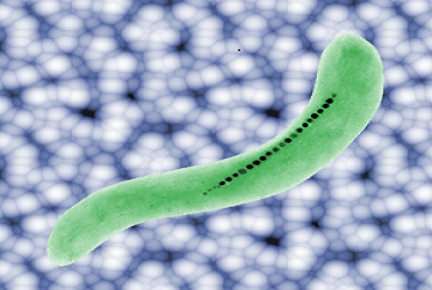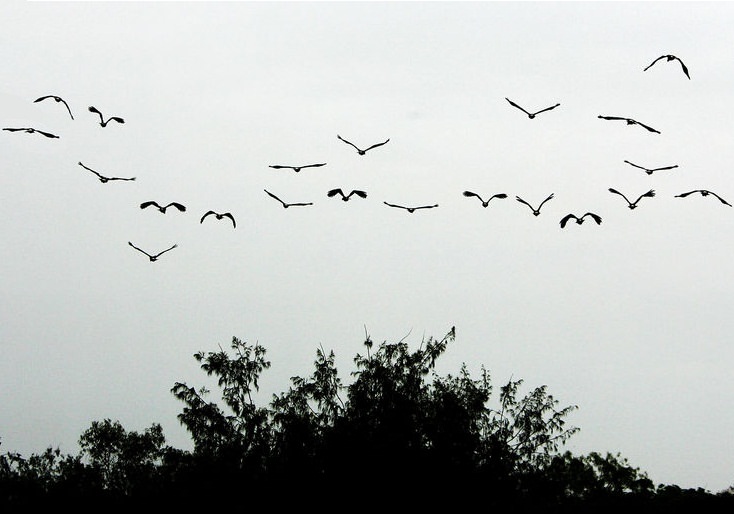[/caption]
In the 1950s, the Sauer research team locked some birds in Olbers planetarium and started messing with them. First they projected a northern hemisphere autumn sky and the birds flew ‘south’ – away from Polaris and keeping Betelgeuse to the left (‘east’). Then they projected a spring night sky and the birds flew ‘north’ towards Polaris with Betelgeuse again to their left, albeit this time in the ‘west’. The position of Betelgeuse appeared to be significant, perhaps because it’s one of the brighter stars in the northern hemisphere and just to the north of the celestial equator.
Later experiments with Indigo Buntings demonstrated that birds raised with no experience of the night sky didn’t have a clue what to do when released into a planetarium. However, birds that were raised with the night sky visible would fly ‘south’ away from the sky’s axis of rotation, whether that was Polaris or an artificial arbitrary axis created within the planetarium.
From this work, researchers concluded that it was unlikely that birds were born with a genetic star map, but instead learned to orientate themselves with respect to the rotating night sky by reference to other directional cues – like the position of the Sun and the Earth’s magnetic field.
It’s thought that many migratory birds closely monitor sunrise and sunset – allegedly when you see a line of birds on a power line, most will be facing east in the morning and west in the evening, recalibrating their internal compasses. Checking for a north-south plane of polarized light at sunrise and sunset may help them determine their latitude – by indicating how far off due east or west the Sun is when it’s at the horizon.
Pigeons have well developed magnetoreception that they can use as an alternative to solar navigation. For example, they can ‘home’ even with a heavily overcast sky – but get them to wear a little magnetized helmet that screws up their perception of the Earth’s magnetic field and they get lost. On the other hand, if it’s a clear day with the Sun visible they can find home just fine – even with a little magnetized helmet on.
As well as the birds – bacteria, bees, termites, lobsters, salamanders, salmon, turtles, mole rats and bats have all been shown to possess magnetoreception.
Magnetotactic bacteria manufacture their own magnetite crystals – building chains of crystals that mimic a compass needle. The bacteria appear to use their magnetite crystals for the simple purpose of determining which way is down – since a straight line to magnetic north will pass through the Earth’s surface.

It’s yet to be determined how a complex nervous system might interface with magnetite or whether magnetite is the primary mechanism in larger multicellular animals. Magnetite crystals have been isolated from bees and termites – and are apparently synthesized by them. However, in larger animals it’s harder to tell – as these crystals are tiny and difficult to find or visualize in vivo. An alternate magnetoreception mechanism based on photochemicals in the retina has been proposed for migratory birds – although a role for magnetite, particularly in pigeons which have relatively large concentrations of it in their beaks, can’t be ruled out.
Humans have traces of magnetite in their brains – although the court is still out on whether this gives us any capacity for direction finding by magnetoreception. Some research suggests a few individuals may have some very minor ability – but not enough for anyone to consider preferring this to their GPS.

